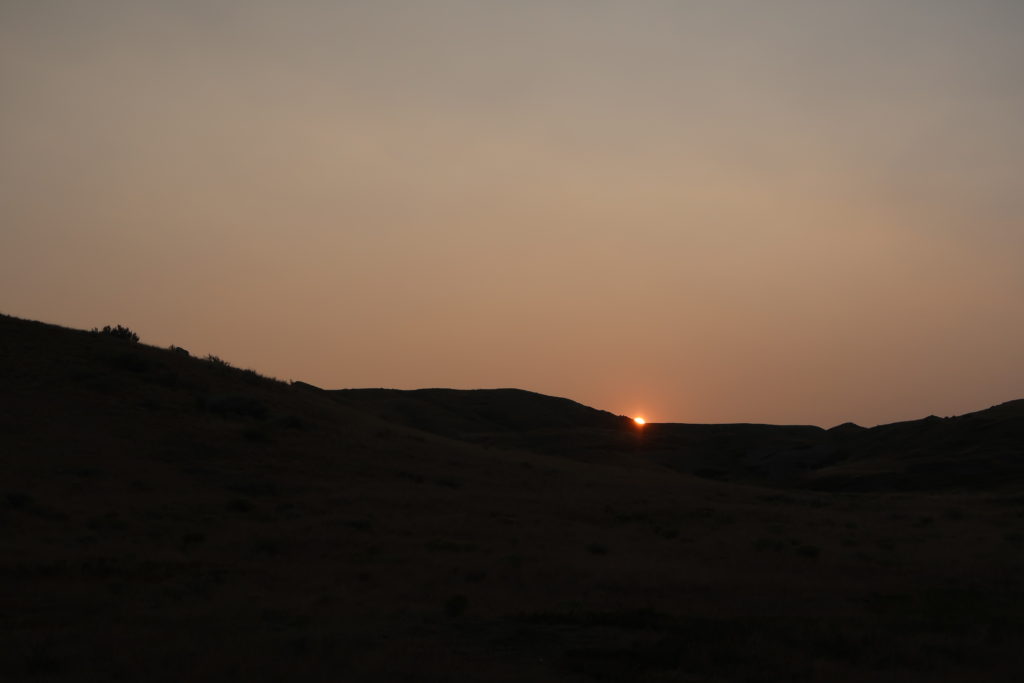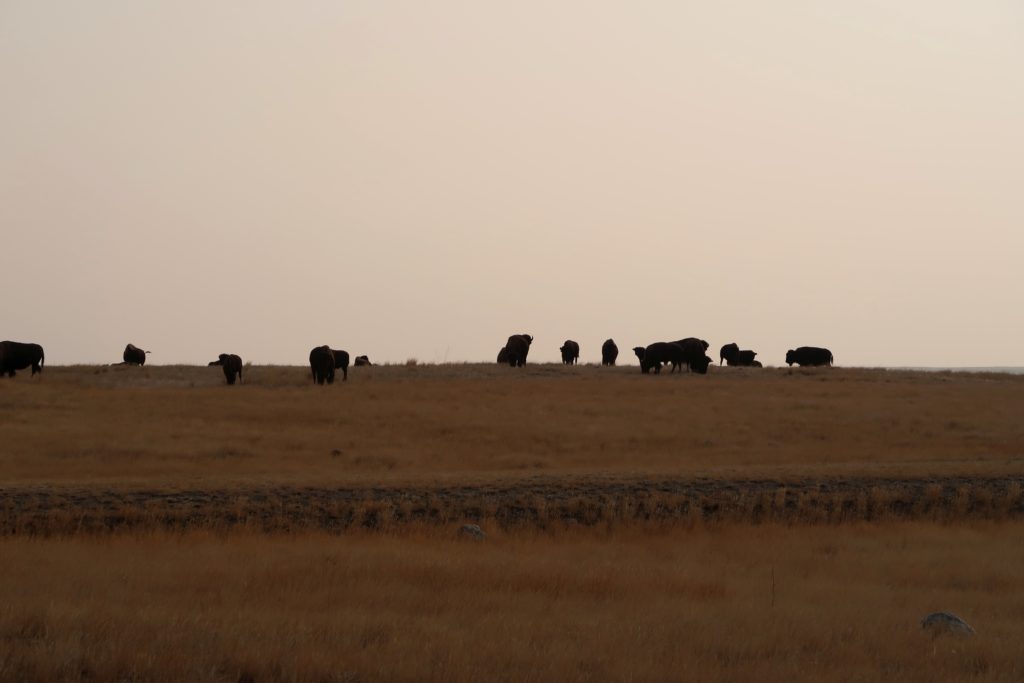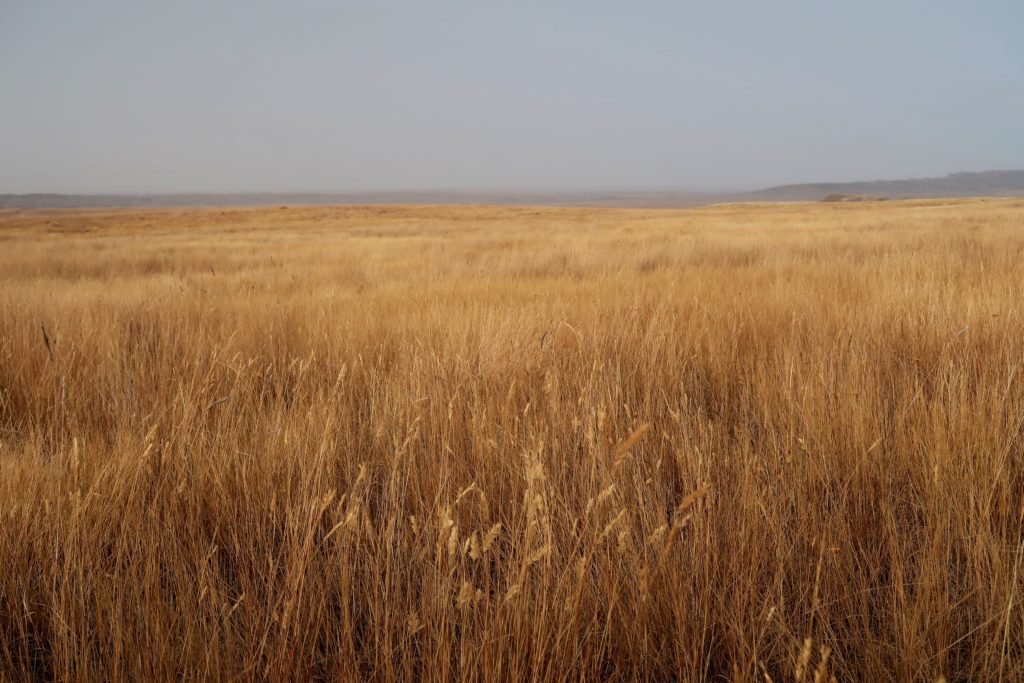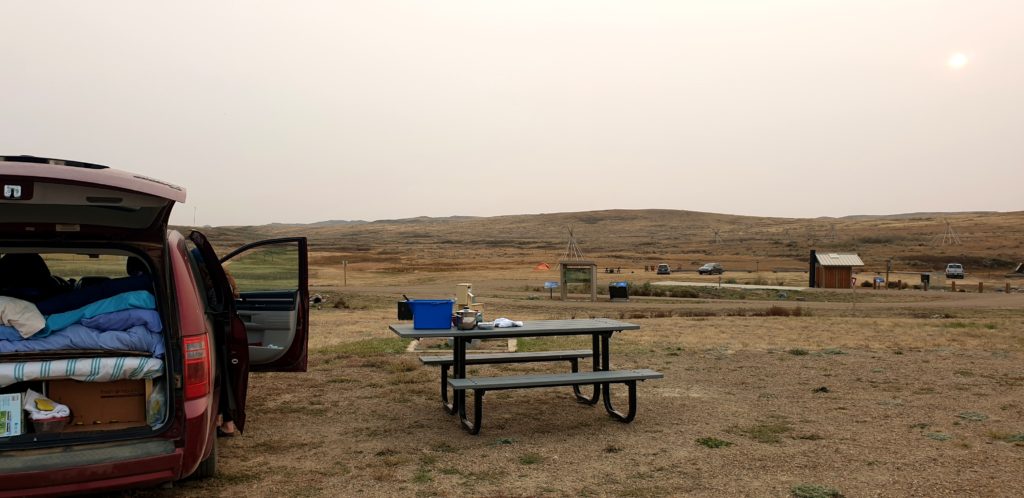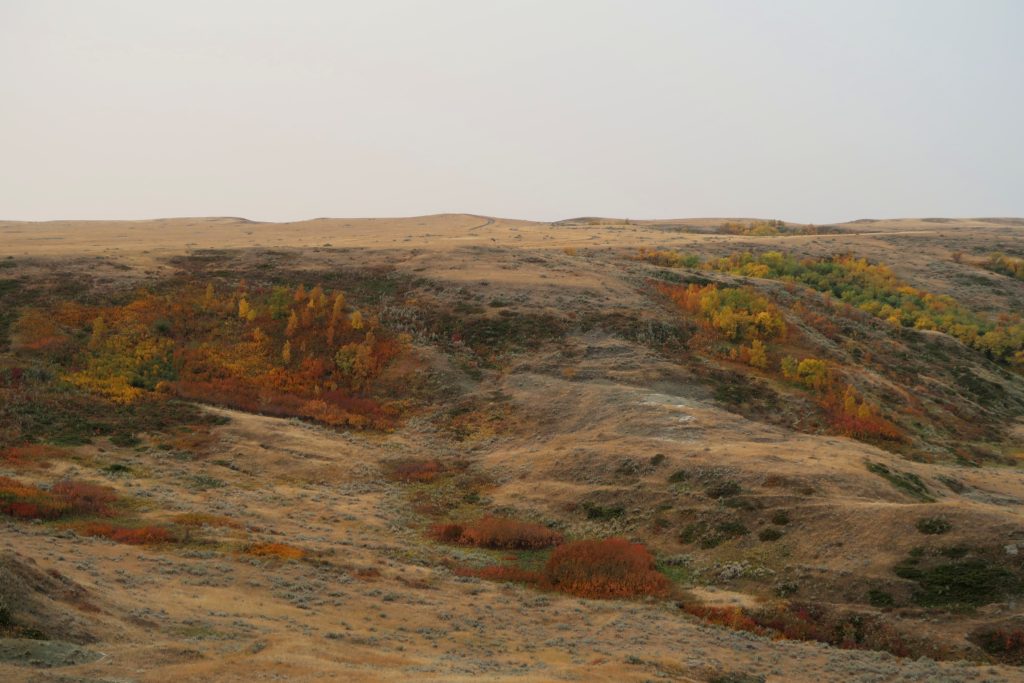We once again started driving early, this time heading further into Grasslands National Park. The park boundaries are interestingly defined, so we actually had to drive up and around to get to the next area I’d picked out to explore. Surprisingly, the 15 kilometre stretch of gravel road to re-enter the park turned out to be much better than I expected, and we saw a lot of wildlife on the way: a mule deer sleeping on the road, several buckhorn deer, lots of grouse, a herd of bison, and our personal favourite, a huge prairie dog town. The town on the side of the road not far into the park and spanned hundreds of metres. Each prairie dog family had a small mound of dirt as their home, and when we drove closer, some of them would start making noise to warn their neighbours of our approach. Quite a cute and unique animal!
I had picked out an 11km hike called the Broken Hills Trail, and it meandered through the grasslands and some small hills near the Frenchman River. Although it was perhaps a little longer than necessary, it was interesting to see subtle variations in the landscape during the hike. Some of the grass appeared soft and delicate, forming pleasant patterns in the wind, while others were more scrub-like and richly coloured. Towards the end of the trail, we were startled to come across a solitary bison, right on the path! It seemed to be having an afternoon nap, and rolled around on the ground taking a dust bath as we stood watching it. Because the bison was in a small hollow, we didn’t see it until we were close, when we were probably only 20 metres away (for safety, it’s recommended to keep at least 100 metres). We were pleased it wasn’t as startled as we were, and were also happy to have seen something other than grass on the long hike!
Our final stop in Grasslands National Park was in the east block, a two hour drive away. Here, we actually paid for a campsite, as I hadn’t found any free options ahead of time. It also featured a long gravel road to reach it, but this time we didn’t come across any wildlife. It should have been a fantastic evening for stargazing as it was the new moon, but the wildfire smoke made an appearance again and the night sky was completely clouded over. We had a peaceful evening nonetheless, and tried our hand at horseshoe throwing down by the creek.
The park is supposed to be known for its connection to dinosaur fossils (it was the location of the first dinosaur fossil discovered in Canada in 1874, and also contained triceratops and tyrannosaurus rex fossils). However, the east block only featured one noteworthy hike, where you could apparently see what’s known as the Cretaceous–Paleogene boundary – a layer of sediment from 66 million years ago, marking the time when an asteroid caused a sudden mass extinction – but only after a six kilometre hike to get there. We passed on this an instead took an easier option – driving along a perfectly smooth, $11 billion scenic road that the park had recently received funding for. It seemed out of place to have such a smooth drive after the gravel and bumpy roads we had experienced elsewhere in Saskatchewan, but we enjoyed it all the same!
